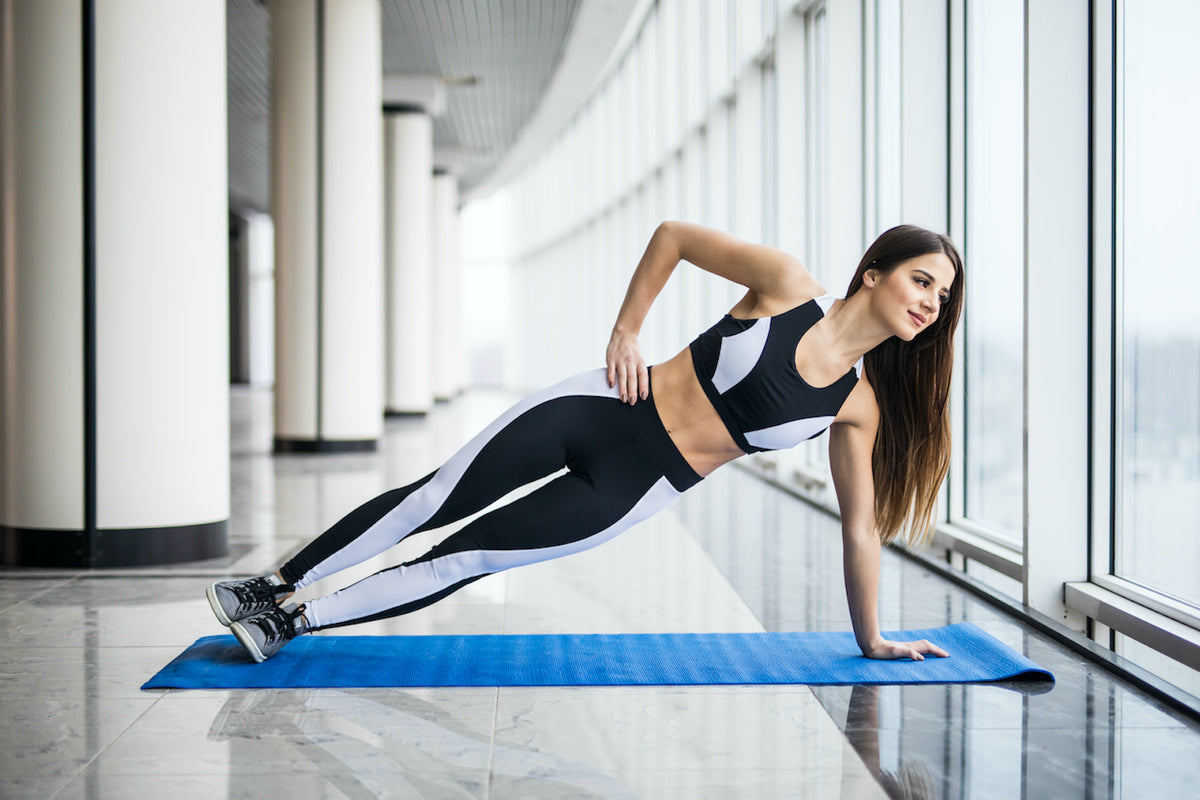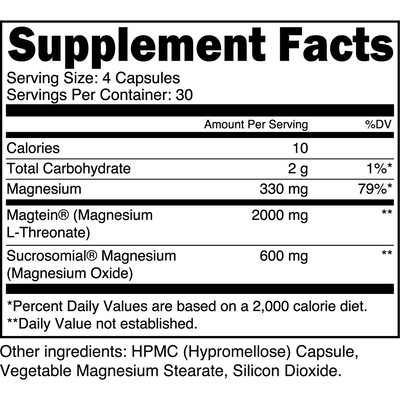3 Reasons Why You Should Never Neglect Oblique Exercises

V-cut abs are a bonafide sign of toned obliques. However, there are less obvious indicators of oblique strength you may not be aware of, such as posture and balance. On the other hand, weak obliques will make you slouch and can even cause back pain.
This article will explain why developing oblique strength is essential and share the best oblique exercises you can do to effectively develop these muscles.
3 Reasons Why Oblique Strength Is Important
The obliques sit on both sides of your rectus abdominis muscle, also known as the six-pack muscles. Together with the transversus abdominis muscle, they make up the four main abdominal muscles.
Two sets of oblique muscles are situated along the sides of your upper body: the external obliques and the internal obliques.
Your external obliques run diagonally from your lower ribs to your pelvis. They aid in bending your torso toward the same side and rotating your trunk toward the opposite side.
Your internal obliques are between your external obliques and transversus abdominis muscle. They flex your torso and rotate your trunk toward the same side.
Toned obliques look good, but there are also functional benefits to strengthening these muscles:
1. Strong Obliques Reduce Lower-Back Pain
Lower-back pain affects 60% to 80% of adults in Western countries, per a systematic review by the University of St. Mark & St. John in the United Kingdom. The reason is a lack of core development and weak oblique muscles.
Your obliques are attached to your spine. If those muscles aren't engaged, the curvature of your spine will deepen, creating pressure on your vertebrae, discs, and other neighboring muscles.
If you have chronic lower-back pain, it may be due to underdeveloped obliques and weak core strength. According to a study published in the Journal of Physical Therapy Science, core strength training that incorporates oblique exercises can help alleviate chronic back pain.
2. Strong Obliques Help Improve Your Posture
If you find yourself slouching, you may have a posterior pelvic tilt. Meanwhile, if it feels like your abdomen is always sticking out and your glutes are too far backward, then you may have an anterior pelvic tilt.
A study published in the Strength and Conditioning Journal says an imbalance among your muscle groups is to blame for these pelvic tilts.
When your glutes and abdominal muscles are too weak to support your spine, your hip flexors and erector spinae muscles will have to overcompensate. This results in poor posture.
Building those muscles with glute and oblique exercises is one way to rectify this issue. Improving your sitting habits can also straighten your posture. Sit up tall and take regular breaks to stand up if you work a desk job (or switch to a standing desk).
3. Strong Obliques Equal Better Balance
If you wobble when you walk, bend over, or stand, weak obliques could explain why.
Your obliques work with your core muscles to promote stability and balance. When these muscles are underdeveloped, your hip flexors overcompensate and your spine becomes more curved, which throws off your equilibrium.
The stronger your obliques and other abdominal muscles are, the steadier you will be on your feet.
Improving your balance will not only help with your gait, but also provide you with more stability and control during your workouts.
4 Oblique Exercises for a Strong Core
The most effective oblique workouts also condition your core and other muscle groups like your glutes. For more stability in your spine and abdominal area, incorporate the following oblique exercises into your routine. (Modifications for each exercise are included.)
1. Side Plank

What it is: This full-body exercise has a number of variations, so you can get what you need from it at any fitness level.
Targeted areas: Obliques, transversus abdominis, gluteus medius and gluteus minimus (glutes), and hip adductors. Your chest and shoulder muscles will also benefit from this exercise.
What you'll need: No equipment needed.
Lie on one side with your body fully extended. Place your supporting arm below your shoulder at a 90-degree angle. Stack your legs on top of one other. Shoot your hip upward and raise your arm, keeping your chest high and core muscles tight.
Hold your side plank for at least 30 seconds and then switch sides. You can gradually work your way toward holding this plank position for up to 1 minute per side.
Avoid putting pressure on your shoulder, and resist the urge to bend your back and shoulders. Your core should do the bulk of the work. Keep your body as straight as possible.
- For beginners: If you can't stack your feet and maintain your balance for this oblique exercise, place one foot or knee on the floor. Alternatively, you can stack your legs flat on the floor at a 90-degree angle and keep your hand on your hip.
- Dynamic side plank: Instead of holding a static plank, you can upgrade to a dynamic side plank that requires more upper-body strength. From the standard side plank position, slowly lift your hips, hold for a few seconds, then lower yourself down with control.
- Side plank oblique crunch: Balance is crucial for this side plank variation. From the standard side plank position, bend your top leg and lift it. At the same time, bend your top arm and lower it so your elbow meets your raised knee. Return with control to the starting position.
2. Dumbbell Side Bends

What it is: Improve your core strength and spine flexibility with this simple movement.
Targeted areas: Obliques, erector spinae, and quadratus lumborum (lower back).
What you'll need: A dumbbell. You can also use a kettlebell.
Stand tall with your feet shoulder-width apart. Hold the dumbbell down by your side, and place your other hand on your hip. Bend your torso toward your straight arm with the dumbbell, then come up and contract to the opposite side.
Keep your back up tall to target the oblique muscles. Do not hunch. Make sure your neck is neutral throughout the movement.
The amount of reps for this oblique exercise depends on the weight of your dumbbells. The lighter the weights, the more reps you can do per set.
- With two dumbbells: You can add a second dumbbell to this oblique exercise. Spread your feet slightly wider than shoulder-width. With a dumbbell in each hand, alternate bends between your left side and right side.
- With a resistance band: Have your feet shoulder-width apart while standing on the resistance band. Grab one side of the band and lift it up as you flex your torso to the other side.
3. Russian Twists

What it is: This is one of the most popular oblique exercises out there. It also engages your abdominals.
Targeted areas: Obliques, abdominals, erector spinae, and scapular stabilizers (rotator cuff muscles).
What you'll need: No equipment needed.
Sit up and place your feet flat on the floor with your legs bent to form a 90-degree angle, then tilt your body back so your feet lift off the ground at a 45-degree angle.
Clasp your hands together and twist your upper body from the right side to the left side.
Keep your head up and look forward while maintaining proper posture. Keep your neck neutral and core engaged. All movement should come from your torso.
Do as many reps as you can for up to one minute.
- For beginners: If you don't have the strength to hold your feet off the ground, keep them flat on the floor. Perform the exercise in the same manner otherwise.
- Weighted Russian twists: Add resistance by holding a medicine ball, weighted plate, or dumbbell with both hands as you twist from side to side.
4. Mountain Climbers

What it is: This core-strengthening full-body workout is not only an effective oblique exercise but also great for cardio.
Targeted areas: Obliques, abdominals, deltoids, triceps, and various leg muscles.
What you'll need: No equipment needed.
Get into a push-up plank position. Your arms should be slightly more than shoulder-width apart. Tighten your core muscles, squeeze your glutes, and keep your hips level so your body forms a straight line.
Maintaining plank position, tuck one knee up to chest level, then alternate with the other leg. You can start slow, then gradually increase your speed. Do not raise your back or hips as you move your legs to your chest.
Do as many reps as you can for up to one minute.
- With a medicine ball: For a challenge that will also help with your balance, use a medicine ball as your base to perform your mountain climbers.
- Cross-body mountain climbers: This variation adds a twist. From the starting position, lift your left knee to your right elbow, and then alternate. Once again, keep your hips and core stable while you move your knees up and down.
- Chaturanga run: Unlike mountain climbers, the chaturanga run requires you to be much closer to the floor. From the push-up position, lower your body to about 1 inch off the ground. Bring your right knee to your right elbow, and then alternate.
- Spiderman pushups: This is similar to the chaturanga run. From the push-up position, lower your body to about one inch off the ground. Bring your right elbow to your right knee. Come back up, then repeat on the left side.
Strong Obliques Make You Look and Feel Good
Targeting your oblique muscles will not only help you burn body fat in your mid-section but also improve your posture and balance. Plus, you'll experience less lower-back pain since your hips and spine won't work so hard to keep you upright.
Incorporate regular oblique exercises into your training sessions, and you'll begin to see and feel a difference in your body composition.
Allow your muscles proper time to recover after an intense workout. The antioxidant Coenzyme Q10, helps reduce muscle fatigue and inflammation so you can keep on training.








